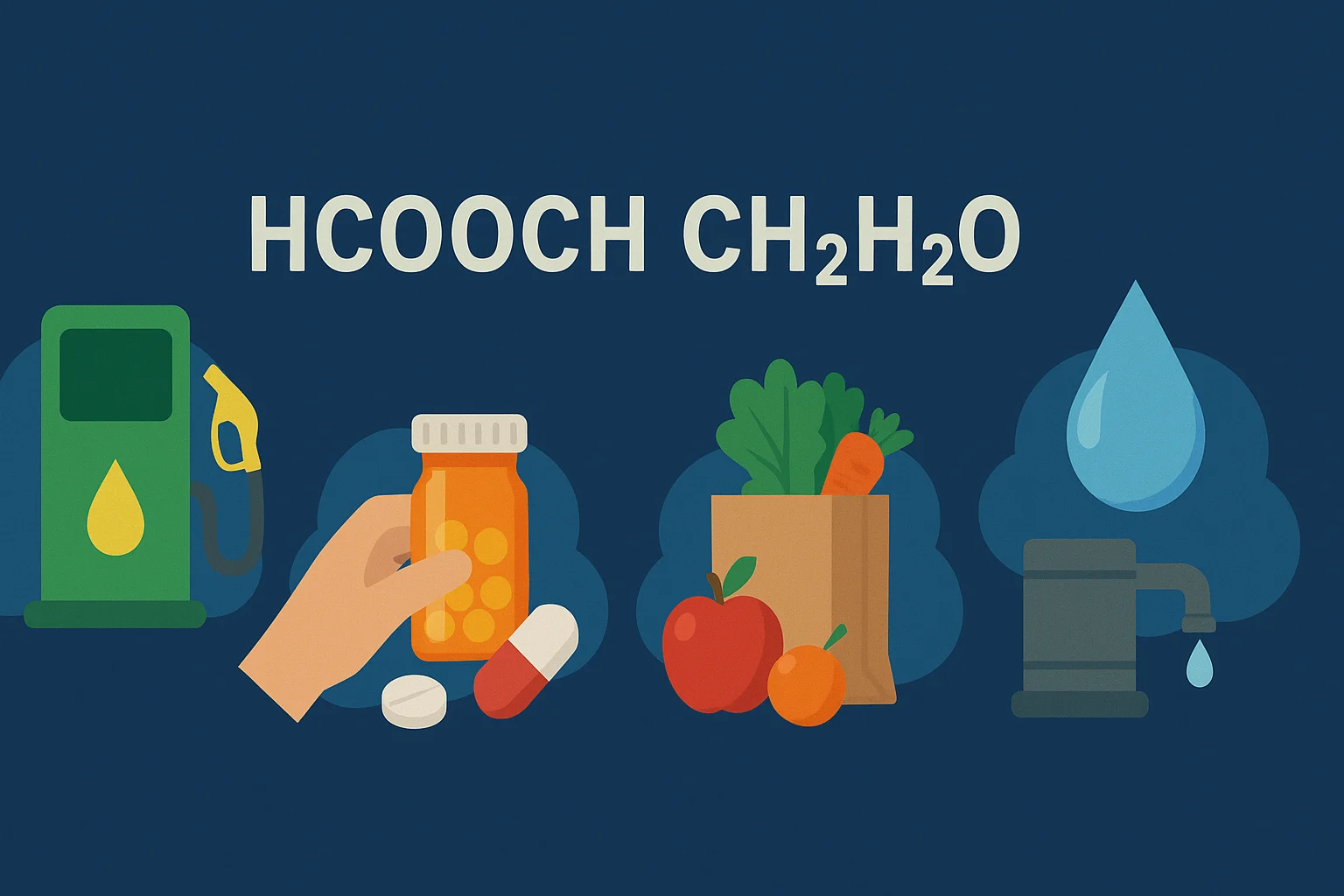In organic chemistry, equations and reactions often appear abstract until we connect them with practical uses in the real world. One such reaction that has gained attention is the hcooch ch2 h2o reaction. While it may look like just another chemical equation, this reaction holds significant value across multiple scientific and industrial fields. By exploring its principles, we can better understand why it matters and how it impacts both research and everyday life.
Understanding the HCOOCH CH2 H2O Reaction
Before diving into real-life applications, it’s essential to understand what the hcooch ch2 h2o reaction represents. At its core, this equation demonstrates how organic compounds interact with water under specific conditions. It involves hydrolysis, where bonds break in the presence of water, leading to new and useful products.
Chemists often use the hcooch ch2 h2o equation as a model reaction when studying how formates, esters, and related compounds behave in aqueous solutions. This knowledge provides a foundation for industries that rely on controlled chemical breakdown processes.
Why the HCOOCH CH2 H2o Reaction Matters
Reactions like hcooch ch2 h2o are not just important for chemistry students—they have wide-ranging implications in daily life. These reactions help scientists develop better fuels, design pharmaceuticals, improve environmental sustainability, and even enhance food chemistry. Understanding their dynamics is key to creating safer, more efficient processes.
Industrial Applications of HCOOCH CH2 H2O
1. Fuel and Energy Production
The hcooch ch2 h2o reaction plays a role in designing alternative fuel systems. Organic reactions involving hydrolysis are central to producing biofuels from plant-based resources. By breaking down complex organic molecules into simpler, energy-rich compounds, industries can harness cleaner energy sources while reducing dependence on fossil fuels.
2. Pharmaceutical Development
In the pharmaceutical industry, controlled hydrolysis reactions like hcooch ch2 h2o are used to produce active drug ingredients. Many medicines rely on ester-based compounds, which must hydrolyze at specific rates inside the body. By studying reactions like this one, scientists can design drugs that release slowly, ensuring effectiveness over time.
3. Food Chemistry
Food preservation and flavor enhancement often rely on hydrolysis. The hcooch ch2 h2o reaction serves as a model for breaking down compounds that create flavor profiles or extend shelf life. For example, the release of certain natural acids through hydrolysis improves taste and stability in processed foods.
4. Polymer and Material Science
Synthetic materials often degrade through reactions similar to hcooch ch2 h2o. By understanding this process, scientists can design polymers that are more durable—or biodegradable, depending on the need. This has applications in packaging industries, construction materials, and medical implants.
Environmental Applications of HCOOCH CH2 H2O
1. Biodegradation Studies
One of the biggest environmental concerns today is waste management. The hcooch ch2 h2o reaction helps model how organic pollutants break down in natural environments. Scientists use this knowledge to design eco-friendly materials that decompose faster, reducing long-term pollution.
2. Water Treatment
In water purification systems, hydrolysis reactions play an essential role in breaking down harmful chemicals. Studying the hcooch ch2 h2o equation allows researchers to optimize these processes, making water treatment plants more efficient in removing contaminants.
Academic Applications of HCOOCH CH2 H2O
1. Organic Chemistry Education
The hcooch ch2 h2o reaction is often introduced to students learning about hydrolysis for the first time. Its relatively simple structure makes it a perfect teaching example for understanding ester reactions and bond-breaking processes in aqueous conditions.
2. Laboratory Research
Researchers use the hcooch ch2 h2o reaction as a baseline to study reaction kinetics—how fast or slow a chemical change occurs. Such studies help in predicting the behavior of more complex organic molecules in different conditions.
Everyday Relevance of HCOOCH CH2 H2O
1. Household Products
Many cleaning agents rely on reactions similar to hcooch ch2 h2o. For instance, soaps and detergents are made through hydrolysis of esters, producing compounds that break down grease and dirt effectively.
2. Agriculture
In fertilizers and pesticides, the hcooch ch2 h2o reaction models how compounds interact with moisture in soil. This helps manufacturers create slow-release products that supply nutrients or protection to crops over extended periods.
Advancements in Research Related to HCOOCH CH2 H2O
Modern research is expanding the potential of hydrolysis-based reactions like hcooch ch2 h2o. Scientists are now exploring how to use these reactions in renewable energy storage, advanced drug delivery systems, and nanotechnology. By controlling hydrolysis rates with precision, industries can design materials that respond predictably to environmental changes.
For example, new studies are focusing on creating smart polymers that degrade only under specific conditions, such as exposure to water at certain temperatures. This innovation stems directly from understanding hydrolysis mechanisms like those in hcooch ch2 h2o.
Challenges in Applying HCOOCH CH2 H2O
While the applications are promising, the hcooch ch2 h2o reaction also presents challenges. Reaction conditions must be carefully controlled, as variations in temperature, pH, or catalysts can change the outcomes. In industrial setups, scaling this reaction from laboratory conditions to large-scale production requires precise monitoring and advanced equipment.
The Future of HCOOCH CH2 H2O Applications
Looking ahead, the hcooch ch2 h2o reaction will likely play an even bigger role in green chemistry, pharmaceuticals, and material science. With sustainability becoming a global priority, reactions that help reduce waste, recycle resources, and produce renewable energy will gain increasing importance.
By integrating digital technologies like AI and machine learning, researchers can also simulate the hcooch ch2 h2o reaction more effectively. This accelerates the discovery of new applications without the need for repeated trial-and-error experiments.
Conclusion
The hcooch ch2 h2o reaction may seem like a simple hydrolysis equation, but its applications reach far beyond the classroom. From fueling the future with renewable energy to advancing medicine, improving food quality, and supporting environmental sustainability, this reaction proves to be highly valuable.
As industries continue to innovate, the hcooch ch2 h2o reaction will remain at the core of scientific progress. By understanding and applying it wisely, we can make significant strides in creating a safer, cleaner, and more sustainable world.


